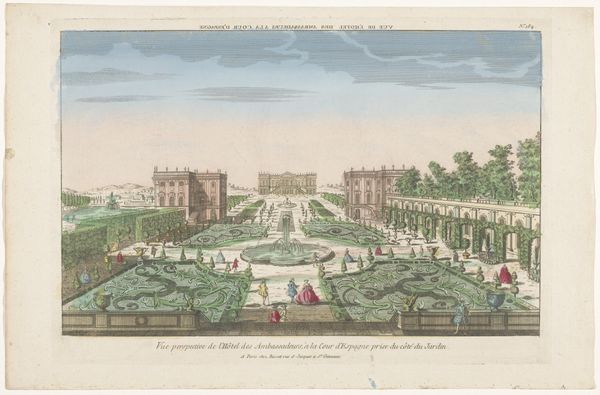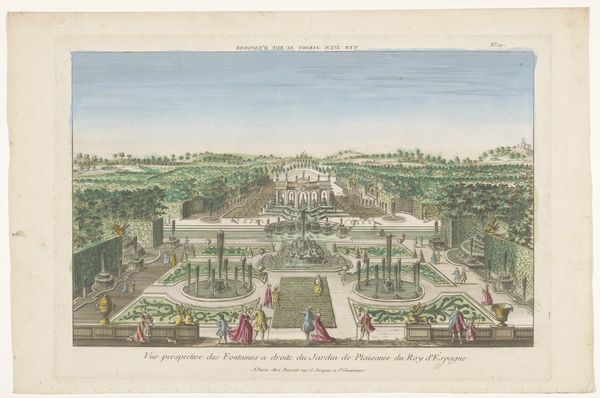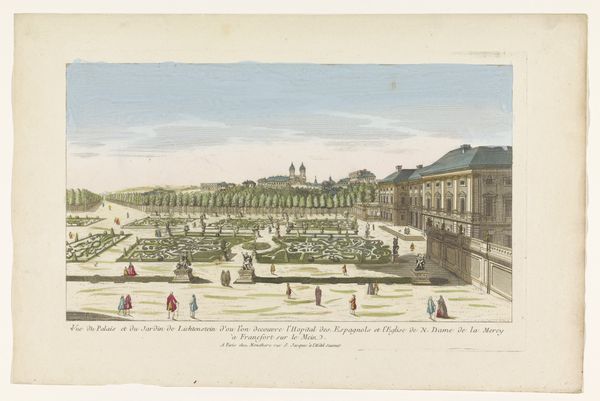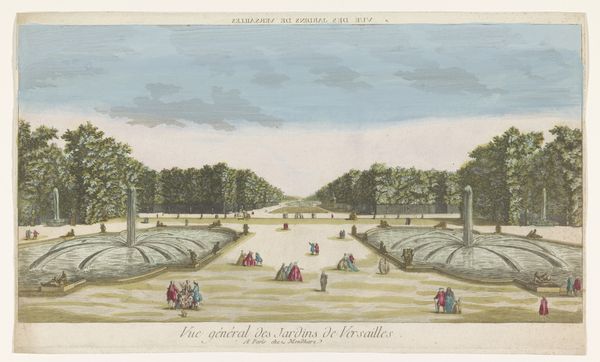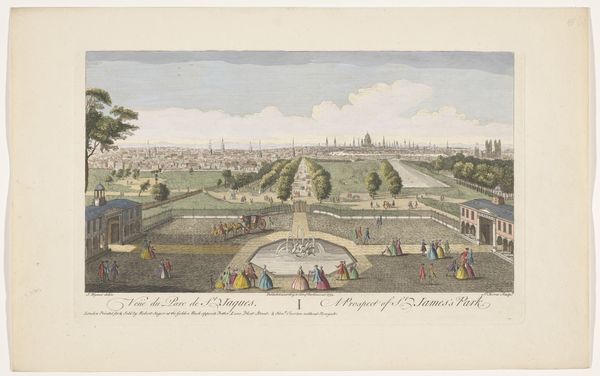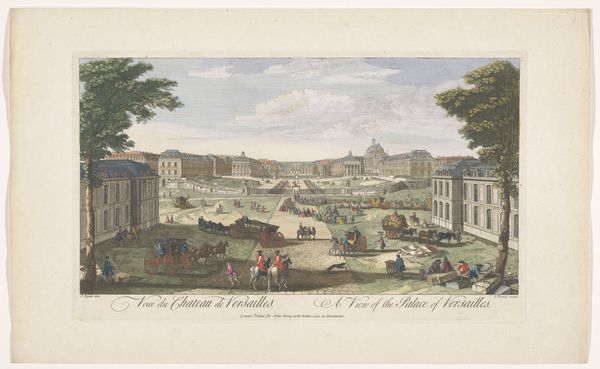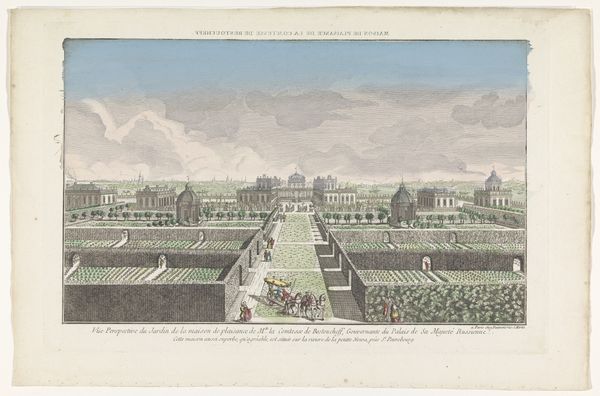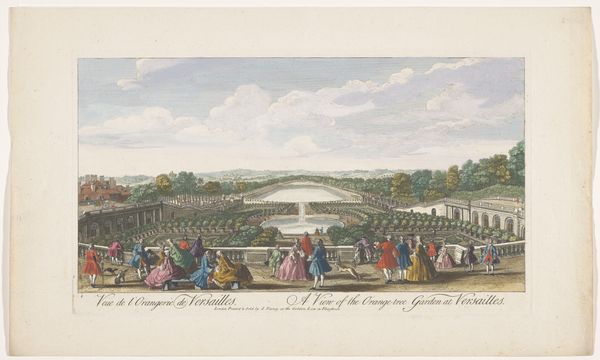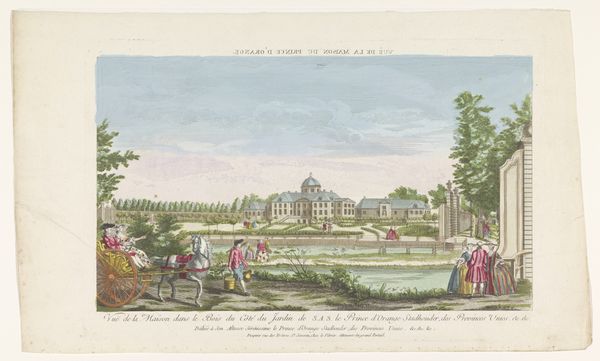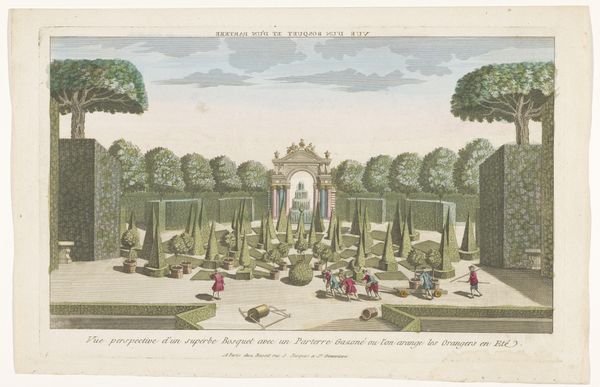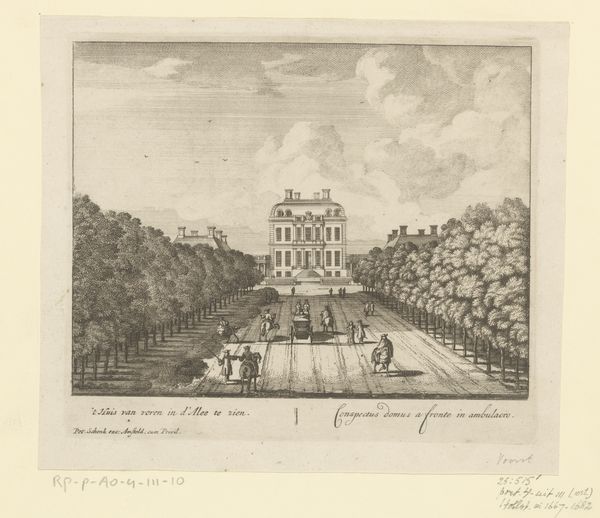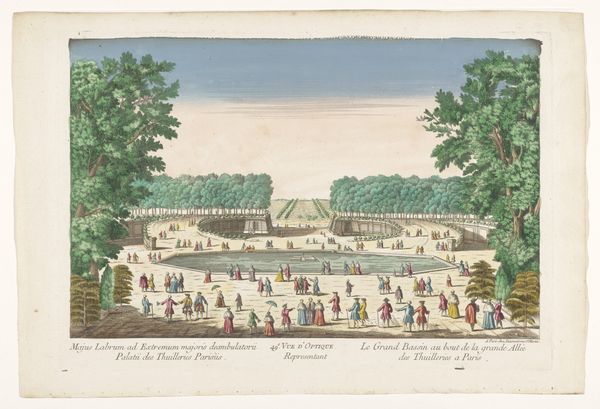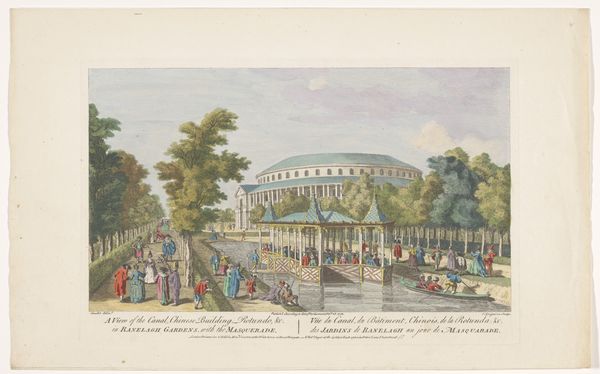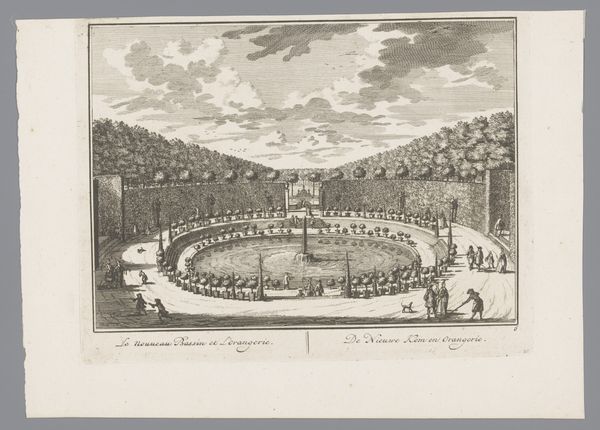
painting, print, watercolor
#
water colours
#
baroque
#
painting
# print
#
landscape
#
watercolor
#
cityscape
#
history-painting
Dimensions: height 252 mm, width 382 mm
Copyright: Rijks Museum: Open Domain
Curator: Let’s turn our attention to this 18th-century print, "Gezicht op de Orangerie van het Paleis van Versailles," credited to Chéreau. The work, rendered in watercolor, showcases the Orangerie at Versailles, positioned as a serene landscape and cityscape scene. Editor: It strikes me immediately as a carefully constructed display of power. The geometric precision of the gardens, viewed through this hazy, romanticized lens, almost feels like propaganda. Curator: Absolutely, this perspective offers insight into the visual rhetoric employed by the French monarchy. The piece speaks volumes about control—nature, meticulously organized and presented as a projection of royal authority and Baroque tastes. It also highlights the increasing use of printmaking to promote specific political and aesthetic values in the eighteenth century. Editor: And the small figures placed within this grand landscape are no accident. Their presence is less about humanizing the space and more about reinforcing the scale of monarchical ambition. Versailles becomes less a place and more an idea, visually articulated through prints such as this and widely distributed. I am curious what its reach was. Curator: Indeed, the intended audience played a pivotal role. Prints such as these served as status symbols and talking points, a tool used by the elite and upper-class society to flaunt their close relations with power, by alluding their acquaintance to prominent figures in French Royalty. Its role, as you indicated, certainly touches upon identity, class, and power, Editor: Looking closer, the figures are engaged in a hunt. That specific image seems meant to communicate both power and pleasure: The nobility in command of nature and also indulging in the luxurious pursuits that their privileged status allows. Curator: The history painting genre always lends itself to such grand interpretations. Editor: It really makes you consider, doesn’t it, how images such as this shaped, and perhaps even distorted, perceptions of reality during that period? I think we must remember that representations of sites of power have their own agenda and context, never acting neutrally. Curator: Your insights, as always, push us to see beyond the picturesque. I, for one, find that exceptionally beneficial. Editor: And I value how you contextualize artwork within broader histories and power dynamics.
Comments
No comments
Be the first to comment and join the conversation on the ultimate creative platform.
